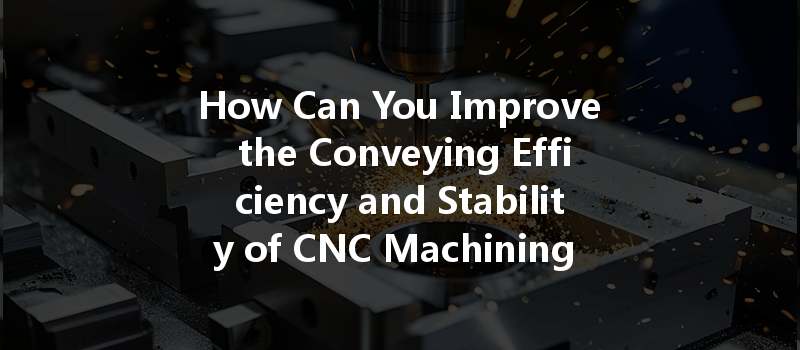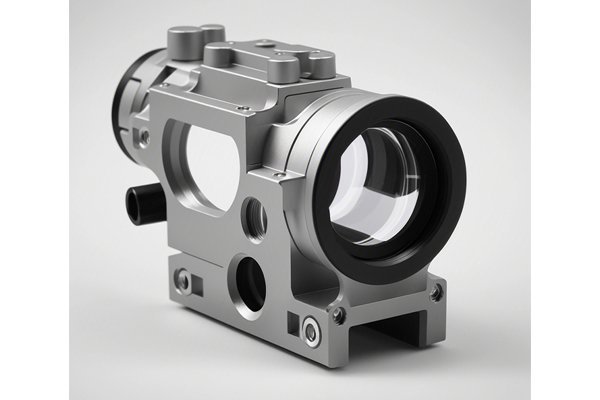Did you know that inefficient CNC machining processes can lead to productivity losses of up to 30%? In today’s competitive manufacturing landscape, optimizing CNC machining isn’t just a luxury; it’s a necessity. As industries continue to evolve, the demand for precision, speed, and reliability in CNC operations has skyrocketed. But how do you improve conveying efficiency and stability in these critical processes?
In this comprehensive blog post, we will explore the intricate world of CNC (Computer Numerical Control) machining, highlighting the key techniques and strategies to enhance conveying efficiency and stability. Whether you’re a seasoned expert or new to the world of CNC, this guide will provide you with valuable insights and actionable steps to take your machining operations to the next level.
—
Understanding CNC Machining
What is CNC Machining?
CNC machining is a manufacturing process that utilizes computer-controlled machines to create complex parts and components. It allows for precise cuts and shapes, making it ideal for industries such as aerospace, automotive, and medical manufacturing. CNC machines can work with various materials, including metals, plastics, and composites.
The Importance of Conveying Systems in CNC Machining
Conveying systems play a pivotal role in CNC machining by transporting materials and components efficiently throughout the production line. An effective conveying system ensures that parts are moved smoothly from one stage of the process to another, minimizing delays and improving overall efficiency.
—
The Factors Affecting Conveying Efficiency and Stability
To improve conveying efficiency and stability in CNC machining, it’s essential to understand the factors that can influence these aspects. Here are some critical components to consider:
The nature of the material being processed can significantly affect conveying efficiency. Materials that are too heavy or have unique geometrical properties may require specialized handling systems.
Proper calibration of CNC machines is vital for ensuring stability during operations. Misalignments or irregularities can cause unnecessary vibrations, leading to inefficiencies and potential damage to parts.
The design of the conveyor system itself can dictate its efficiency. Factors such as speed, angle, and belt type can all impact how well materials are transported.
Automation technologies, such as sensors and robotic arms, can enhance the efficiency of conveying systems by optimizing how components are handled and moved throughout the machining process.
Regular maintenance is crucial for maintaining the integrity of both CNC machines and conveying systems. Wear and tear can lead to breakdowns and inefficiencies.
—
Strategies for Improving Conveying Efficiency and Stability
Now that we’ve established the importance of conveying systems in CNC machining, let’s delve into the strategies to enhance efficiency and stability.

—
Implementation Steps for Enhanced Conveying Efficiency and Stability
To maximize the benefits of the aforementioned strategies, systematic implementation is necessary. Here’s how you can do it:
Step 1: Analyze Current Operations
Begin by conducting a comprehensive audit of your current CNC operations, focusing on your material handling and conveying processes. Identify bottlenecks, inefficiencies, and areas that require improvement.
Step 2: Set Clear Objectives
Based on your analysis, define clear objectives. These could include reducing cycle times, minimizing waste, or enhancing product quality. By setting measurable goals, you will have a direction for your improvement efforts.
Step 3: Develop a Strategic Plan
Create a strategic plan that integrates the chosen strategies into your existing operations. Allocate resources, designate responsibilities, and establish timelines for each phase of implementation.
Step 4: Train Personnel
Staff training is crucial to the success of your new strategies. Ensure that your team understands how to operate new technologies and adheres to maintenance protocols.
Step 5: Monitor and Adjust
After implementing changes, continuously monitor the performance of your CNC machining operations. Be prepared to make adjustments as needed based on the real-time data and feedback you receive.
Step 6: Continuously Improve
Embrace a culture of continuous improvement by regularly seeking feedback, analyzing performance data, and making incremental advancements in your CNC processes.
—
Improving the conveying efficiency and stability of CNC machining processes is crucial for maintaining a competitive edge in today’s manufacturing landscape. By understanding the factors affecting these aspects and implementing effective strategies, businesses can not only enhance productivity but also ensure high-quality end products.
In summary, the key techniques to improve conveying efficiency include optimizing material handling, investing in advanced conveyor technology, maintaining a robust calibration regime, improving conveyor design, integrating automation, and establishing a solid maintenance program.
Remember, the investment in enhancing your CNC machining operations doesn’t just pay off in efficiency; it leads to reduced costs, improved quality, and greater customer satisfaction. It’s a significant step toward future-proofing your business, ensuring that you remain at the forefront of the ever-evolving manufacturing sector.
Take the time to reflect on these strategies and consider how they can be applied within your operations. The path to enhanced CNC machining efficiency is a journey worth embarking upon.






